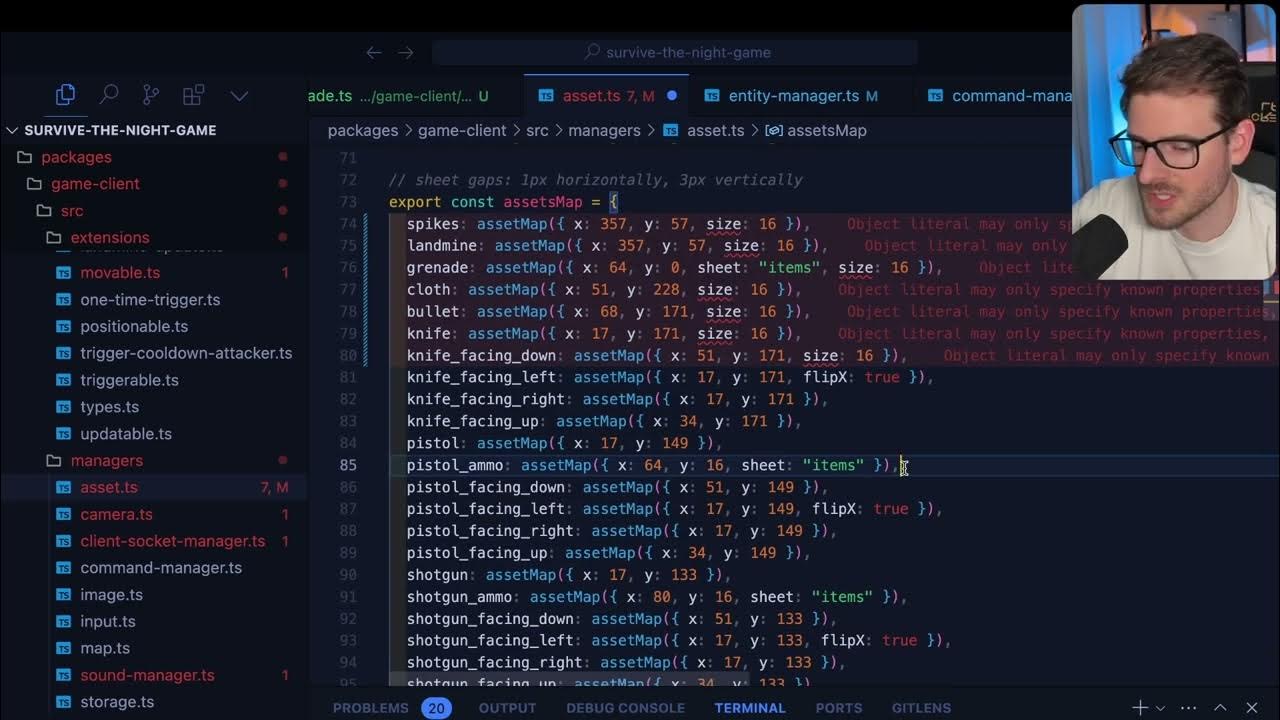Particle On A Sphere Wavefunction | Physical Chemistry II | 7.5
Summary
TLDRВ этом видео мы выводим волновую функцию для частицы на сфере. Используя метод разделения переменных, решаем уравнение для двух переменных — углов θ и φ. Волновая функция разделяется на два уравнения: одно похоже на решение для частицы на кольце, а другое решается через полиномы Лежандра. Эти решения известны как сферические гармоники, которые играют важную роль в квантовой механике, особенно при изучении водородного атома. Обсуждается также выражение для энергии частицы на сфере, зависящее от квантового числа l.
Takeaways
- 🔢 Уравнение для частицы на сфере использует оператор Лежандра, который действует на волновую функцию.
- 🔍 Метод разделения переменных применяется для решения уравнения, разделяя волновую функцию на функции от двух переменных: θ и φ.
- 🌐 Решение уравнения включает разложение волновой функции на две части: одну для θ и одну для φ.
- 📐 Уравнение для переменной φ похоже на решение задачи частицы на кольце и имеет аналогичное решение.
- 📊 Функция для переменной θ решается через полиномы Лежандра, которые зависят от квантовых чисел l и mₗ.
- 🔮 Полученные решения, называемые сферическими гармониками, представляют собой функции от θ и φ и зависят от квантовых чисел.
- 🌌 Сферические гармоники выглядят как атомные орбитали, что полезно для изучения водородного атома.
- ⚛️ Энергия трехмерной частицы на сфере выражается через квантовое число l, и её формула включает h-bar и момент инерции.
- 🔢 Квантовые числа l (квантовое число углового момента) и mₗ (магнитное квантовое число) имеют целочисленные значения.
- ⚛️ Эти решения вводят основные аспекты движения: поступательное, колебательное и вращательное, которые важны для изучения водородного атома.
Q & A
В чем заключается проблема частицы на сфере, описанная в видео?
-Проблема частицы на сфере заключается в нахождении волновой функции, удовлетворяющей уравнению с оператором Лежандра, который действует на волновую функцию и возвращает постоянную, умноженную на эту же волновую функцию.
Какой метод используется для решения уравнения с оператором Лежандра?
-Для решения этого уравнения используется метод разделения переменных, что позволяет разбить исходную задачу на две независимые задачи по переменным θ и φ.
Как выглядит волновая функция после применения метода разделения переменных?
-Волновая функция разделяется на две функции: одна зависит от угла θ (обозначается как θ(θ)), а другая — от угла φ (обозначается как φ(φ)).
Каков следующий шаг после разделения волновой функции на функции θ и φ?
-Следующим шагом является подстановка разделенной волновой функции в исходное уравнение и проведение алгебраических преобразований, чтобы разделить уравнение на два отдельных уравнения для θ и φ.
Какое решение получено для функции φ(φ)?
-Решение для функции φ(φ) соответствует случаю частицы на кольце и выражается как φ(φ) = (1/√2π) * e^(i * mₗ * φ), где mₗ — квантовое число магнитного момента.
Что собой представляет решение для функции θ(θ)?
-Решение для функции θ(θ) выражается через полиномы Лежандра, которые зависят от двух квантовых чисел — l (квантовое число момента импульса) и mₗ, и являются функцией cos(θ).
Что такое сферические гармоники и как они связаны с решением задачи?
-Сферические гармоники представляют собой решения задачи частицы на сфере и выражаются через комбинацию функции φ(φ) и полиномов Лежандра для θ(θ). Они обозначаются как Yₗₘₗ(θ, φ).
Каковы основные квантовые числа, используемые для описания сферических гармоник?
-Основные квантовые числа — это l (квантовое число углового момента) и mₗ (магнитное квантовое число). Квантовое число l принимает целые значения от 0 и выше, а mₗ может быть равно 0, ±1, ±2 и так далее.
Какое физическое значение имеют сферические гармоники в контексте химии и квантовой механики?
-Сферические гармоники имеют форму, которая напоминает атомные орбитали. Это важные решения, которые используются для описания 3D вращательного движения квантовой частицы, например, при анализе атома водорода.
Как выражается энергия частицы на сфере и от чего она зависит?
-Энергия частицы на сфере зависит от квантового числа l и выражается формулой E = l(l+1) * ℏ² / (2I), где I — момент инерции, а l — квантовое число углового момента.
Outlines

Этот раздел доступен только подписчикам платных тарифов. Пожалуйста, перейдите на платный тариф для доступа.
Перейти на платный тарифMindmap

Этот раздел доступен только подписчикам платных тарифов. Пожалуйста, перейдите на платный тариф для доступа.
Перейти на платный тарифKeywords

Этот раздел доступен только подписчикам платных тарифов. Пожалуйста, перейдите на платный тариф для доступа.
Перейти на платный тарифHighlights

Этот раздел доступен только подписчикам платных тарифов. Пожалуйста, перейдите на платный тариф для доступа.
Перейти на платный тарифTranscripts

Этот раздел доступен только подписчикам платных тарифов. Пожалуйста, перейдите на платный тариф для доступа.
Перейти на платный тарифПосмотреть больше похожих видео

Houdini Disintegration FX - Pro Houdini & Nuke VFX Course

Уроки Python с нуля / #3 – Базовые операции в языке Python

My best advice for using Cursor

NETANYAHU pris dans le PIÈGE de sa GUERRE ? (Israël/Palestine)

⌚🧪 Qu'est-ce qu'une mole ? ‖ Physique-chimie ‖ Lycée

Сколько Стоит Одежда в АВСТРАЛИИ | Обзор Самого Крупного Аутлета
5.0 / 5 (0 votes)